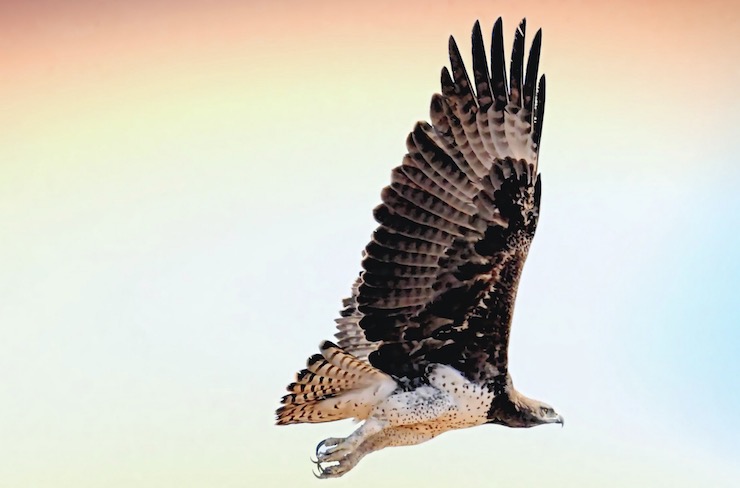
Drones are often considered to be mechanical versions of birds. In fact, drone designers often study real life birds as they seek to equip their UAVs with a deft maneuverability beyond the capability of helicopters and fixed wing aircraft. But can drones actually pass for birds among real-life avians in their midst?
Apparently not. Despite persistent efforts to employ drones to closely monitor and collect data on the movements of birds in flight, experts say they too often have the opposite effect: they scare their research subjects off.
One researcher thinks he has the answer. Try to make your drone look just like a bird. How? By building your drone’s airframe and fuselage around a dead stuffed bird.
The idea for “taxidermy” bird drones – replete with feathers and flapping wings – is the brainchild of Dr. Mostafa Hassanalian, an engineering professor at the New Mexico Institute of Mining and Technology. Hassanalian’s hoping that taxidermy drones, by appearing genuine, will be freer to mingle with bird flocks and observe their movements up close, collecting hitherto unavailable data and enhancing the conservation of endangered species.
The idea has yet to be tested fully outside the confines of Hassanalian’s lab, but it will be in a matter of months.
“We came with this idea, well all right if the bird is dead and taxidermied, we have all the structure, so we can re-engineer them, and make them as a drone,” Hassanalian told Scripp News earlier this month.
Hassanalian’s cage-like lab features over a dozen wing-flapping drone prototypes that appear remarkably bird-like. His team is experimenting with various programs to match the birds’ wing movements with possible flight trajectories, simulating how real birds maneuver while airborne.
While most experiments are performed indoors, the team has tested some of their concepts in a field outside the lab where birds in the area sometimes swoop down to see what their feathery cousins might be up to.
Hassanalian said it’s too early to tell if his taxidermy drones will pass muster in the wild. “We hope our drones will be nature-friendly,” he said.
Hassnalian’s team is also delving into a little known area of research: the effect of bird coloring on flight efficiency. Aircraft of different colors are known to have varying flight efficiencies. Hassanalian’s team is exploring how the same issue might affect its taxidermy drones.
Hassanalian told Scripps that the lab has never captured a live bird for use in its experiments. The Institute purchases stuffed birds from local taxidermy businesses, which limits the range of species the drones emulate.
Hassanalian’s been studying drones for the past 15 years and had the idea for taxidermy drones nearly a decade ago. In addition to providing safer and more accurate wildlife monitoring, he believes his team’s research can demonstrate how birds conserve energy during flight as well as offering fresh insights into their deft maneuverability. These insights might assist in the design of more fuel efficient aircraft and in the development of the aviation industry as a whole.
A third possible use is enhanced air safety, especially bird strike avoidance. Bird drones might be deployed near airports to scare off other birds flying too close to airplanes during takeoff.
Hassanalian acknowledges that more research is needed to validate claims about the likely utility of taxidermy drones. In addition, regulatory approval from the Federal Aviation Administration and from government wildlife agencies will be needed before his team can conduct extensive tests in the wild.
Hassanalian isn’t the only researcher to look to birds for design inspiration. A team at Stanford has studied peregrine falcons to design a drone with birdlike legs and gripper claws that can perch on trees and buildings. But these and other bird-like UAVs currently in development are being designed primarily for aerial mapping and survey missions.
Hassanalian appears to be the first researcher to hope that drones dressed in full-length bird camouflage might actually be welcomed by their brethren.
|